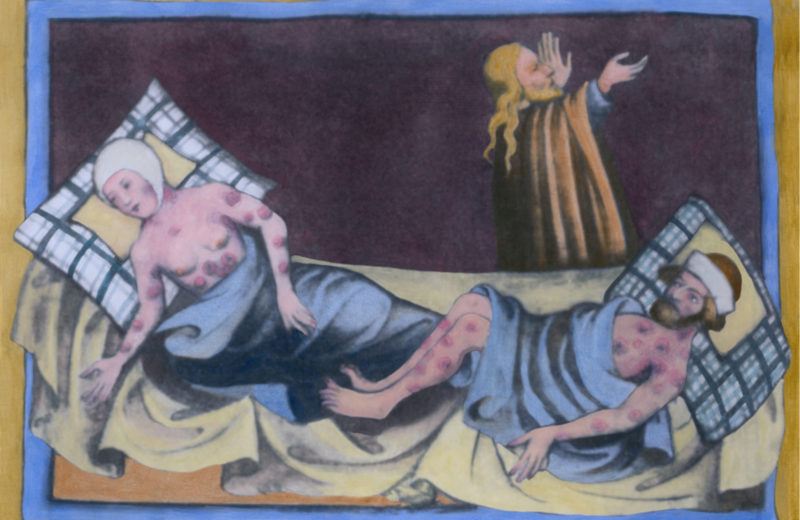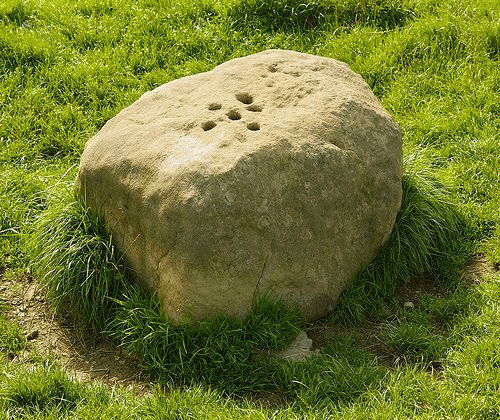Commercial Habits and Pandemics

Going out to buy groceries this morning was an eye-opening experience. The coronavirus pandemic is forcing us to rapidly evolve new habits for trading with each other.
My grocery store has adopted a policy that requires all customers to disinfect their hands at the entrance. Bright orange lines have been painted on the floor indicating proper distancing for the lineup. At the checkout counter, plastic dividers have been installed to separate customers from cashiers. All employees wear plastic gloves. And cash is no longer accepted.
At one point I picked out a sheaf of asparagus, but wasn’t happy with the feel (a few stalks were too soft). I was about to put it back and get another, as I would usually have done, but realized that this sort of prodding may no longer be a safe or respectable thing to do. So I grimaced and bought the not-so-great sheaf.
On social media, I see people swapping tips for disinfecting their debit cards. A friend of mine only uses payment touchscreens at grocery stores after wiping them down. Food delivery services are moving to contactless drop-offs in order to minimize the chance of spreading the virus.
Central banks are adapting, too. The Bank of Korea, Korea’s central bank, stopped accepting circulated banknotes and coins from overseas in mid-February. A week later it began to routinely superheat banknotes to 150 degrees Celsius for two to three seconds. And, earlier in March, it announced that all cash coming to the central bank from local banks would be quarantined for two weeks.
Having never experienced such a drastic change in my shopping habits, I’ve been casting around for historical precedents. Here’s what I’ve found.
Our commercial habits changed dramatically during previous pandemics, too. The plague that spread around the world in the 1300s and continued to resurface well into the 1700s was spread by fleas containing the bacteria yersinia pestis. Don’t get me wrong: the coronavirus is not the plague. Yersinia pestis was far more fatal than today’s SARS-CoV-2 virus, especially in an age where medical knowledge was usually rooted in superstition rather than science.
Commercial distancing was one trick that people used to avoid catching the plague. William Boghorst, a physician who lived through London’s 1665 plague outbreak, describes how those “that were most shy of the disease” refused to take money or goods without “washing and airing” them.
In Daniel Defoe’s semi-fictive account of the London plague, meat buyers in the market “would not take it off the butcher’s hand, but took it off the hooks themselves.” As for the butcher, he refused to touch the coins, but put them “into a pot full of vinegar, which he kept for that purpose.” At the time, vinegar was believed to be a disinfectant.
Plague stones, or vinegar stones, were erected to serve as sanitized trading posts during plague outbreaks. They can still be found around England today, with examples in Macclesfield, Stretford, Eyam, Ackworth, Bury St Edmunds, and York.

Historian William Hutton recounts how country-folk were often too afraid to enter villages filled with potentially sick customers. Instead, they would bring their merchandise to the plague stone, usually set up on the outskirts of a town. They then backed away from their goods (and from the waiting townspeople). A city official then advanced and selected what was needed, scrupulously avoiding touching anything that was not desired. To pay, the official then deposited money in a carved bowl in the plague stone filled with vinegar. “Thus a confidence, raised by cruel necessity, took place between buyer and seller,” writes Hutton.
While some commercial habits emerged spontaneously, others were enforced from the top. In London, the 1665 plague outbreak was met with laws banning the trade in second-hand clothes. Many types of entertainment were shut down, including “all plays, bear-baitings, games, singing of ballads, buckler-play, or such-like causes of assemblies.” Taverns and coffee houses were forced to observe strict hours.
These regulations, codified throughout Europe in the form of the Plague Orders, had evolved over many centuries as a way to attempt to combat plague outbreaks. According to historian Stephen Porter, they were inspired by the early experience of Italian cities with the plague. The most controversial component of London’s Plague Orders were the forced quarantines of entire households with confirmed sick family members.
By the peak of the epidemic, most of the shops within London were no longer operating. Those shops that remained open, out of an excess of caution, restricted their access to customers. According to Porter, a store would be “approached cautiously” by a shopper and, if someone else was there, it was considered better to wait outside.
While the current epidemic has brought dramatic shifts to our commercial practices reminiscent of an eeriey past, at least we can take comfort in the fact that our changed behavior has a basis in modern science. When Londoners refused to touch coins in 1665, and insisted on running them through vinegar, they were doing so because they believed in the “miasma theory” of plague transmission. According to this theory, the plague was spread by poisonous vapour characterised by a foul smell. Since vinegar had a strong odor, it would presumably counteract any dangerous vapour present on coins.
But the miasma theory was wrong. With the benefit of scientific hindsight, we now know that the plague was probably spread by infected fleas feeding on rats. Washing coins probably had little effect on arresting the plague’s spread. Coins don’t provide the sort of environment fleas like.
Luckily, we have a much better grasp of what causes the SARS-CoV-2 virus to spread. The main form of transmission is from droplets produced when an infected person sneezes. This knowledge allows us to institute a more effective set of protective measures to abide by as we carry out our day-to-day purchases.
Wash hands after shopping. Maintain a reasonable distance. Buy a little bit more than usual in order to cut the number of weekly shopping trips. And, for cashier’s who accept coins and banknotes, avoid face-touching and wash frequently. It isn’t very much fun. But we are much better positioned than our ancestors.












